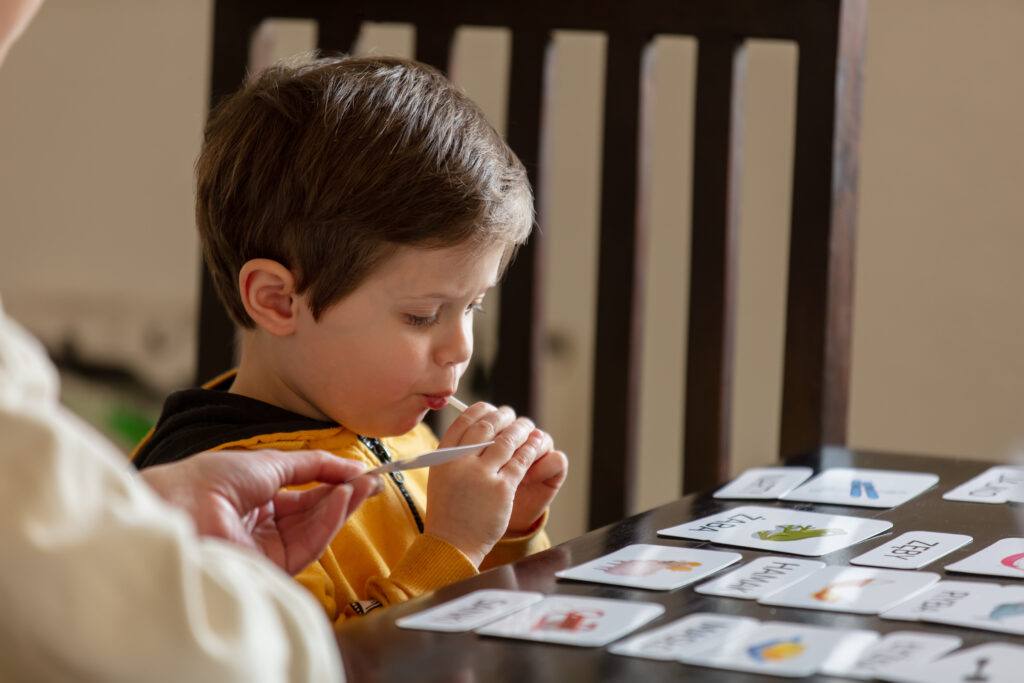Children with autism spectrum disorder (ASD) often find themselves at the center of a group of caring providers focused on helping them thrive. Helping these providers (including parents and caregivers) work together toward the same goals and work with similar techniques can be key to helping children thrive.

Part of this success can center on the ability of a young person’s ABA therapist and their school providers to communicate with one another (and with families) effectively. We’ll talk about how that works and what it looks like in practice.
How ABA Therapy Works
ABA therapy is considered the foremost approach to helping young people with autism spectrum disorder learn new skills, become more independent, and develop stronger social skills and relationships.
In Applied Behavior Analysis (ABA) board certified clinicians teach new behaviors from the standpoints of antecedents, behavior, and consequences, also known as the ABCs of behavior.
- Antecedent. The set of circumstances that precedes a behavior is called the antecedent.
- Behavior. How someone reacts to an antecedent is known as the behavior.
- Consequence. Whether positive or negative, the consequence is what happens immediately after the behavior, which works to encourage the skill.
In ABA therapy, positive reinforcement, not negative, helps encourage positive behaviors and skills in a happy, supportive environment. Adults with proper training, including an ABA therapist, school teacher, and family members can implement these practices (or parts of them) to help children thrive.
A School’s Role in ABA Therapy
Public schools typically offer IEP Programs. This individual education program is covered under the IDEA ACT (Individuals with Disabilities Education Act). IEP programs include evaluations to determine a child’s strengths and challenges. IEP programs also help provide students with accommodations in their primary classroom and through special classes if necessary.
Parents, ABA Therapists, and the School
Parents, therapists, and your child’s school can work together to help support similar goals. By working together, your child’s ABA therapist and their school teachers can:
- Collaborate: Together, therapists and teachers can determine how to easily transition from school activities to therapy, to possibly provide therapy services at school, or to ensure that services rendered at school are in line with what is being covered in therapy.
- Consistent Goal Setting: Working together, therapists and school personnel ensure that school and therapy are focused on certain goals being targeted by both ABA therapy and school workers.
- Educational Impact: By communicating together, therapists and school personnel can ensure that targeted goals are achievable, and that strategies and interventions being learned during therapy sessions are also being put into practice at school.
Parents oversee the changes to these plans by getting updates from the school and the therapists, making final decisions based on feedback, recommended transitions, and more.
The Impact on Your Child’s Success
A child with ASD usually has a village of loving, caring supporters. However, when these supporters aren’t aligned on the same goals, it can lead to confusion or overload for a child. If, for instance, social skills are the primary focus of ABA therapy sessions, keeping this focus at home can help with progress made.
Keeping Everyone Aligned
Parents and caregivers are the ones who bring their children to therapy and schedule future sessions. The board-certified ABA therapist and families can touch base to ensure everyone is helping the student meet the same goals.
Here are a few ways to help that happen seamlessly:
- Ensure Two-Way Communication: Sometimes communication between a student’s school and their ABA therapist can be an unfortunate afterthought. Providers are busy, as are schools, and communication may simply be forgotten. Checking in to see that both parties are relaying information timely and consistently is important.
- Use Consistent Tools: Ask for the same materials used during therapy sessions, such as visual schedules, reward charts, or specific activities. By using the same tools at home, you can support your child’s progress more effectively.
- Set Goals Together: Collaborate with your child’s ABA therapist to set achievable goals for your child’s development. By including your input and discussing what works best at home, you can ensure the therapy plan meets your family’s needs.
If you have notes from previous educators and ABA therapists, keep them to share with new providers as your child moves from grade to grade.
If you feel a resource is missing, it’s always okay to ask for different providers. The primary goal is that both you and your child are comfortable with the providers in their lives.
Final Thoughts: Successful Collaboration in ABA Therapy and Schools
The first step in aligning your child’s therapist with their school is finding an ABA therapy center you love. Stride Autism Centers has convenient and accessible locations and offers programs that fit the needs of your family and your child. They strive to work with school systems to effectuate needed changes and encourage goals at every milestone.
Your child can thrive, and you give them a boost by helping their school and therapists work together.
Brad Zelinger is the Founder and CEO of Stride Autism Centers.
Sources:
Individualized Education Programs (IEPs) | Nemours KidsHealth
Individuals with Disabilities Education Act (IDEA) | U.S. Department of Education
Leave a Reply